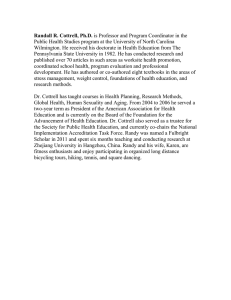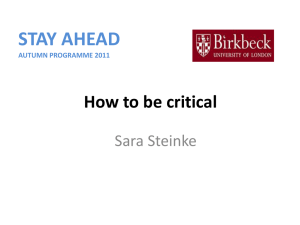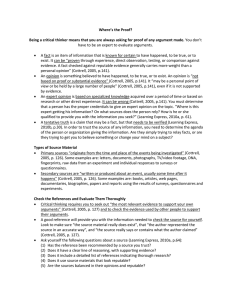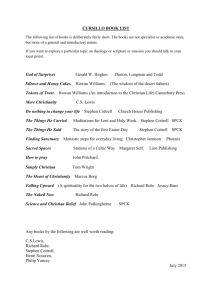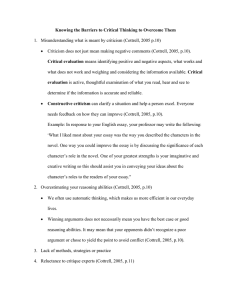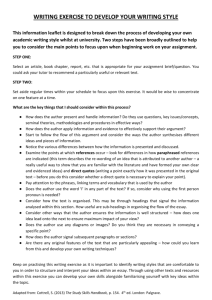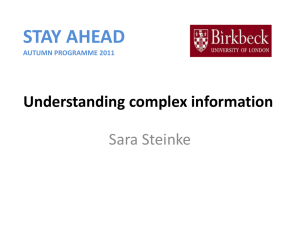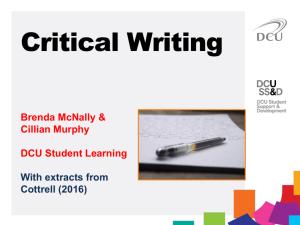What Is Critical Thinking? Critical thinking
advertisement
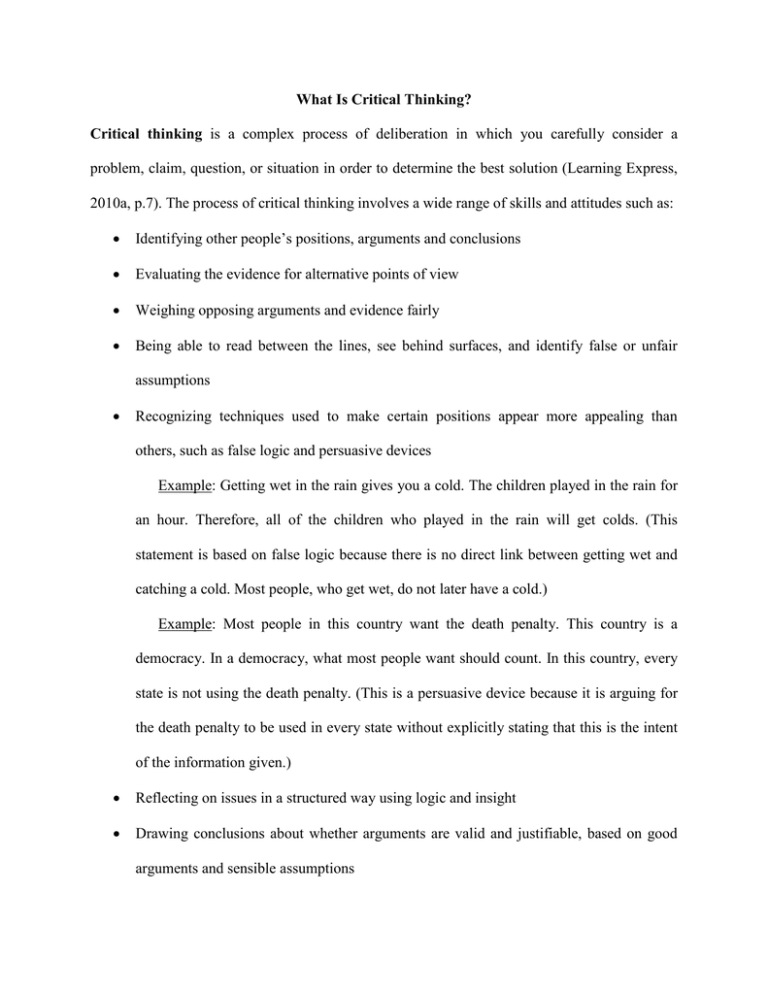
What Is Critical Thinking? Critical thinking is a complex process of deliberation in which you carefully consider a problem, claim, question, or situation in order to determine the best solution (Learning Express, 2010a, p.7). The process of critical thinking involves a wide range of skills and attitudes such as: • Identifying other people’s positions, arguments and conclusions • Evaluating the evidence for alternative points of view • Weighing opposing arguments and evidence fairly • Being able to read between the lines, see behind surfaces, and identify false or unfair assumptions • Recognizing techniques used to make certain positions appear more appealing than others, such as false logic and persuasive devices Example: Getting wet in the rain gives you a cold. The children played in the rain for an hour. Therefore, all of the children who played in the rain will get colds. (This statement is based on false logic because there is no direct link between getting wet and catching a cold. Most people, who get wet, do not later have a cold.) Example: Most people in this country want the death penalty. This country is a democracy. In a democracy, what most people want should count. In this country, every state is not using the death penalty. (This is a persuasive device because it is arguing for the death penalty to be used in every state without explicitly stating that this is the intent of the information given.) • Reflecting on issues in a structured way using logic and insight • Drawing conclusions about whether arguments are valid and justifiable, based on good arguments and sensible assumptions • Presenting a point of view in a structured, clear, well-reasoned way that convinces others (Cottrell, 2005, p.2). Noted learning expert, Stella Cottrell, states that critical thinking involves accuracy and precision. This means dedication on your part to finding the right answer. She offers the following elements to ensure that accuracy and precision prevail. • Attention to detail/Focused observation: Take the time to note small clues that throw greater light on the overall issue. These clues will increase your awareness about the issue and allow you to process the information more skillfully. • Identifying trends and patterns: Carefully map out information, analyze data, and identify similarities. • Repetition: Go back over the same information several times and check that you haven’t missed anything. • Taking different perspectives: Look at the same information from different points of view. Consider all sides of an issue, evaluate the evidence, and imagine different scenarios and possible outcomes based on different points of view. • Objectivity: Put your own likes, beliefs and interests to one side with the goal of gaining the most accurate outcome or a deeper understanding. • Considering implications and distant consequences: What appears to be a good idea in the short term may have long term effects that are not desirable (Cottrell, p.5). Stella Cottrell also describes critical thinking as a student as an active process involving the following: • Finding out where the best evidence is for the subject you are discussing. • Evaluating the strength of the evidence to support different opinions. • Coming to a conclusion about where the available evidence appears to lead. • Constructing a line of reasoning to guide your audience through the evidence and lead them to your conclusion. • Selecting the best examples. • Providing evidence to support and illustrate your arguments (Cottrell, 2005, p.9). • Making a distinction between accurate, objective information and the kind that’s false or biased. Sources Cottrell, S. (2005). Critical thinking skills: Developing effective analysis and argument. NY: Palgrave McMillan. Learning Express (2010a). Critical thinking skills success in 20 minutes a day (2nd ed.). NY: Learning Express. This document was compiled by Shirley “Mandy” Sexton, Ph.D.
